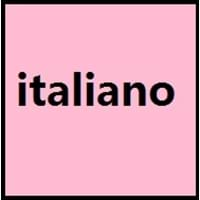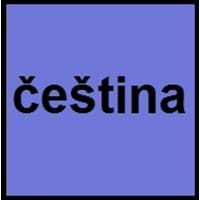Countries
Croatia, European Union, Italy, San Marino, Slovenia, Switzerland, Vatican City
Czech Republic, European Union
National Language
Italy, San Marino, Switzerland, Vatican City
Czech Republic
Second Language
Albania, Croatia, Malta, Slovenia
Not spoken in any of the countries
Speaking Continents
Europe
Europe
Minority Language
Crimea, Eritrea, France, Libya, Monaco, Montenegro, Romania, Somalia
Austria, Croatia, Germany, Slovakia
Regulated By
Accademia della Crusca (Academy of the bran)
Institute of the Czech Language
Interesting Facts
- One of the most romantic and melodic language in the history of the world is Italian.
- Italian Language is in the top three of the most widely spoken European languages in Europe.
- The Czech language was known as Bohemian as early at 19th century.
- In czech language, there are many words that do not contain vowels.
Similar To
French and Portuguese Languages
Polish, Slovak and Sorbian
Derived From
Latin
Not Available
Alphabets in
Italian-Alphabets.jpg#200
Czech-Alphabets.jpg#200
Writing Direction
Left-To-Right, Horizontal
Left-To-Right, Horizontal
How Are You?
Come stai?
Jak se máš?
Good Night
buonanotte
dobrou noc
Good Evening
buonasera
dobrý večer
Good Afternoon
buon pomeriggio
dobré odpoledne
Good Morning
buongiorno
dobré ráno
I Love You
Ti amo
Miluji tě
Excuse Me
Scusami
promiňte
Where They Speak
Lazio
Chodsko, Bohemia
How Many People Speak
Not Available
Dialect 2
Central Italian
Lach
Where They Speak
Abruzzo, central Marche, Lazio, south Tuscany, Umbria
Czech Silesia, Hlucin, Northeast Moravia
How Many People Speak
Not Available
Dialect 3
Tuscan
Moravian
Where They Speak
Corsica, Gallura, Haute-Corse, Sardinia, Tuscany, Umbria
Czech Republic, Czech Silesia, Moravia, Slovakia
How Many People Speak
Not Available
Second Language Speakers
Not Available
Native Name
Italiano
čeština / český jazyk
Alternative Names
Italiano
Bohemian, Cestina
French Name
italien
tchèque
German Name
Italienisch
Tschechisch
Pronunciation
[itaˈljaːno]
Not Available
Ethnicity
Italians
Czechs
Origin
960 BC
9th Century
Language Family
Indo-European Family
Indo-European Family
Branch
Not Available
Western
Early Forms
No early forms
Proto-Czech, Old Czech
Standard Forms
Italian
Standard Czech
Signed Forms
italiano segnato "Signed Italian" & italiano segnato esatto "Signed Exact Italian"
Czech Sign Language
Scope
Individual
Individual
ISO 639 6
itas
Not Available
Glottocode
ital1282
czec1258
Linguasphere
51-AAA-q
53-AAA-da
Language Type
Living
Living
Language Linguistic Typology
Subject-Verb-Object
Not Available
Language Morphological Typology
Fusional, Synthetic
Fusional, Synthetic
All Italian and Czech Dialects
Most languages have dialects where each dialect differ from other dialect with respect to grammar and vocabulary. Here you will get to know all Italian and Czech dialects. Various dialects of Italian and Czech language differ in their pronunciations and words. Dialects of Italian are spoken in different Italian Speaking Countries whereas Czech Dialects are spoken in different Czech speaking countries. Also the number of people speaking Italian vs Czech Dialects varies from few thousands to many millions. Some of the Italian dialects include: Romanesco, Central Italian. Czech dialects include: Chod , Lach. Also learn about dialects in South American Languages and North American Languages.
Italian and Czech Speaking population
Italian and Czech speaking population is one of the factors based on which Italian and Czech languages can be compared. The total count of Italian and Czech Speaking population in percentage is also given. The percentage of people speaking Italian language is 0.90 % whereas the percentage of people speaking Czech language is 0.15 %. When we compare the speaking population of any two languages we get to know which of two languages is more popular. Find more details about how many people speak Italian and Czech on Italian vs Czech where you will get native speakers, speaking population in percentage and native names.
Italian and Czech Language Codes
Italian and Czech language codes are used in those applications where using language names are tedious. Italian and Czech Language Codes include all the international language codes, glottocodes and linguasphere.





